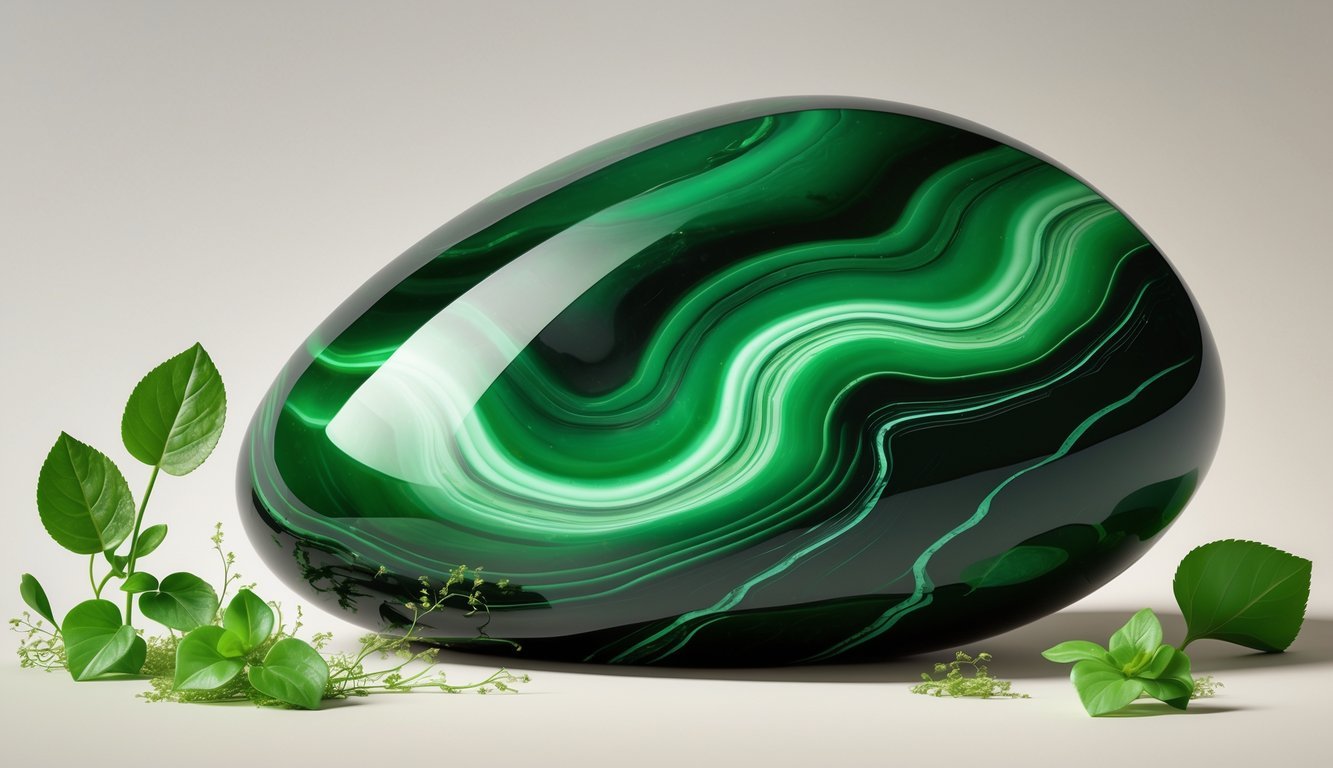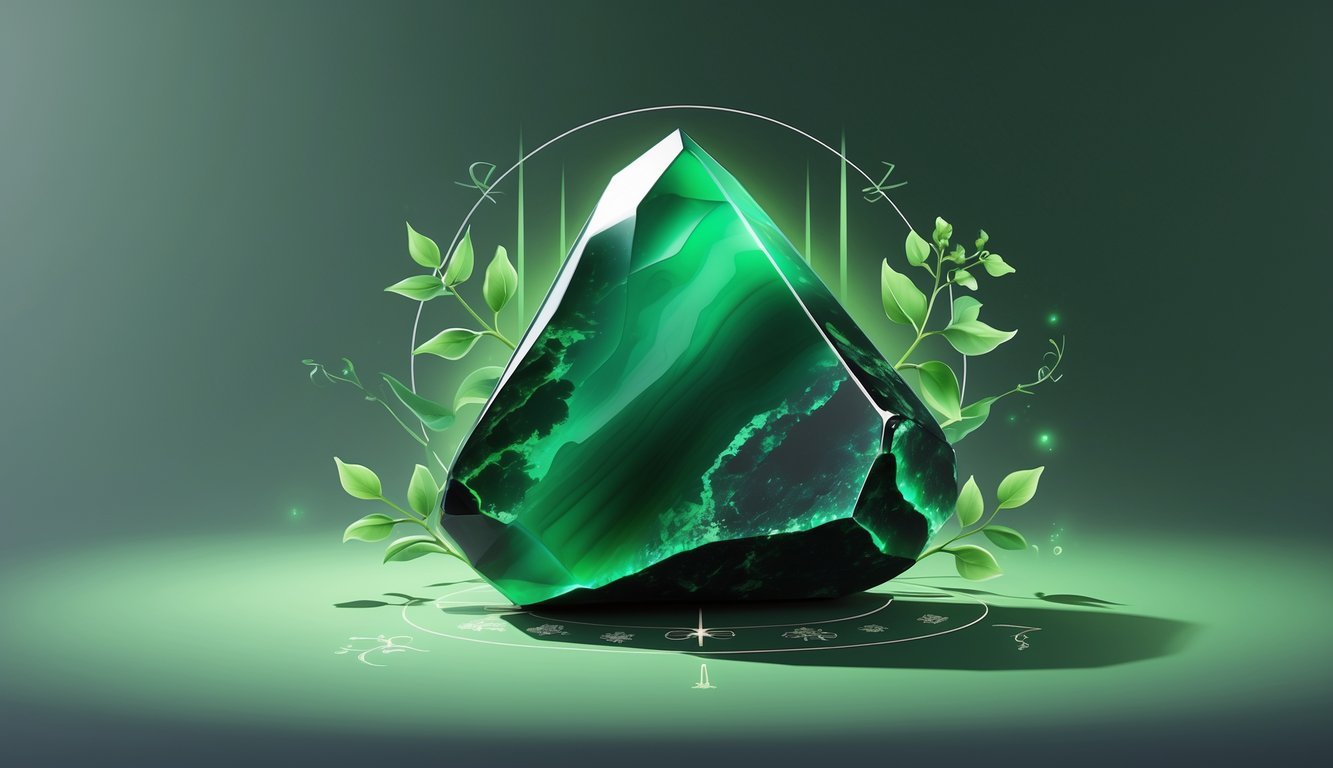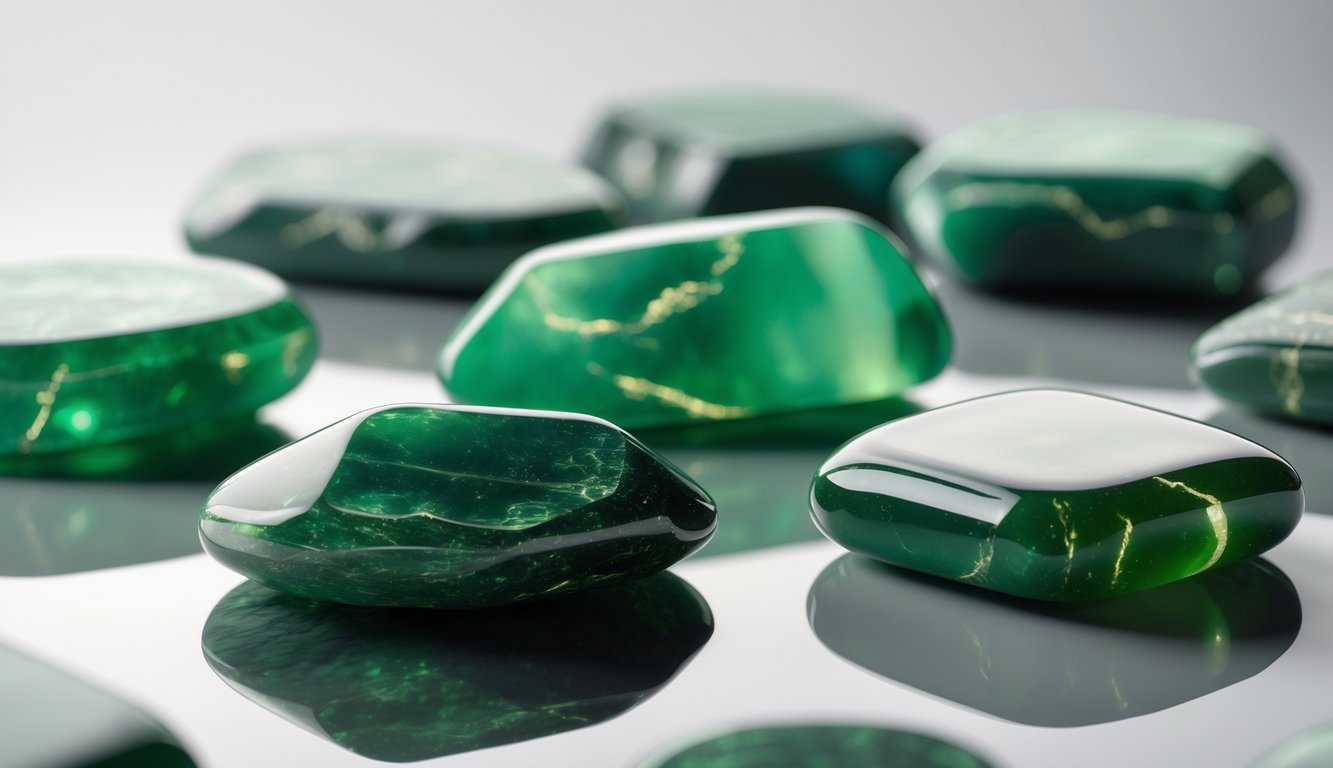PsychNewsDaily Publishers
100 Summit Drive
Burlington, MA, 01803
Telephone: (320) 349-2484
PsychNewsDaily Publishers
100 Summit Drive
Burlington, MA, 01803
Telephone: (320) 349-2484
Green obsidian, a rare volcanic glass, is primarily man-made and valued for its vibrant color, smooth texture, and uses in jewelry and decorative items.

A lot of people think green obsidian is a natural volcanic glass with a green color. But here’s the thing—true green obsidian doesn’t actually occur in nature and is usually man-made.
Obsidian itself forms naturally when lava cools down really fast, but green versions you see in stores are almost always crafted or altered. You won’t just stumble across them out in the wild.
You’ll probably spot green obsidian in crystal shops or online. People love it for the smooth texture and vibrant look.
The colors can blend green with black or gray, sometimes showing off a shiny, almost iridescent surface. Knowing most green obsidian is created helps you figure out what you’re actually buying.
If you’re curious about how it forms or why it stands out from other obsidian types, you’ll find some answers here.

Green obsidian forms when lava cools quickly, turning into a natural volcanic glass. Unlike regular black obsidian, the green comes from minerals like iron or magnesium mixed in.
You can find green obsidian in volcanic areas like Mexico, Oregon, and Brazil. But honestly, most green obsidian on the market is man-made.
Lava from a volcano cools so fast that it can’t crystallize. That’s how green obsidian forms—a glassy stone with a smooth surface.
Iron and magnesium impurities in the lava create that green color. You might spot green obsidian near old lava flows, riverbeds, or lake shores close to volcanoes.
Mines in Mexico and Oregon sometimes produce green obsidian that collectors love. Since it cools rapidly, it usually has a shiny, glassy surface with very few bubbles.
Green obsidian is a mineraloid, so it doesn’t have a crystal structure like quartz. It’s typically translucent to opaque, ranging from deep emerald green to lighter shades.
It’s a hard stone and breaks with a curved, smooth edge called a conchoidal fracture. That makes it great for jewelry or tools.
Some pieces have a slight sheen or iridescence. You’ll notice patches of darker or lighter green, depending on the mineral mix.
There are lots of obsidian varieties: black obsidian, snowflake obsidian, and rainbow obsidian, just to name a few.
Green obsidian is rare and people mostly value it for its color and unique vibe. Sometimes folks mistake it for green glass or other green minerals.
Unlike quartz or rose quartz, green obsidian is glassy, not crystalline. If you want the real thing, look for a smooth texture, glassy shine, and volcanic origin.
| Type | Description | Color Range | Origin Examples |
|---|---|---|---|
| Green Obsidian | Volcanic glass, rare green | Emerald to light green | Mexico, Oregon, Brazil |
| Black Obsidian | Common volcanic glass | Black | Worldwide volcanic areas |
| Snowflake Obsidian | Black with white spots | Black/white spots | Mexico, USA |
| Rainbow Obsidian | Iridescent volcanic glass | Dark with rainbow sheen | Mexico |

Green obsidian is a unique gemstone that people use for everything from jewelry to emotional and spiritual balance. You’ll see it in rings, necklaces, beads, and even sculptures or arrowheads.
Its meaning connects to growth, healing, and transformation.
You’ll spot green obsidian in jewelry like rings, necklaces, and bracelets. The shiny surface and deep green color look pretty striking.
Beads made from green obsidian are popular for bracelets and necklaces too. Beyond jewelry, people carve it into decorative items—arrowheads, tools, and sculptures.
Collectors appreciate these pieces for their beauty and rarity. Since obsidian breaks with sharp edges, people have shaped it into cutting tools and arrowheads for centuries.
Today, the price depends on size, clarity, and color. Some pieces are surprisingly valuable.
Many believe green obsidian helps with emotional healing by releasing negative energy and restoring balance. It’s linked to the heart chakra, so people use it to encourage compassion and heal old wounds.
During meditation, green obsidian is said to boost focus and help you connect with your inner self. It’s thought to ground your energy and support personal growth.
Some folks even associate it with physical healing, like boosting immunity or easing stress. Whether or not you buy into that, the stone’s energy is supposed to keep you steady during tough times.
Real green obsidian has a natural glassy feel and smooth edges. Sometimes you’ll notice faint patterns or swirls.
It feels cold and a bit heavy in your hand. Fake obsidian, on the other hand, is often just dyed glass or resin. It might look too perfect or have an unnaturally bright shine.
You might even see bubbles in fakes. To check if it’s real:

You’ll find quick answers about green obsidian’s meaning, look, and value. This section also explains how to spot the genuine stuff and how it stacks up against other obsidian types.
Green obsidian stands for new beginnings and renewal. Some spiritual traditions connect it to the Wood element.
People often turn to it for healing and protection when life’s changing.
Real green obsidian is volcanic glass with trace elements like iron or chromium giving it its color.
Be cautious—true green obsidian is rare, so there are lots of fakes out there.
Look for natural patterns and steer clear of stones that look too bright or uniform.
A lot of folks believe green obsidian helps with emotional healing and clearing out negative vibes.
Some say it also supports mental clarity and personal growth.
Green obsidian gets its color from specific trace elements, unlike black or rainbow obsidian.
Its unique shade ties it to meanings like renewal and growth.
Prices jump around depending on size and quality.
Since real green obsidian is hard to find, authentic pieces usually cost more than regular black obsidian.
You won’t find green obsidian as a material or item in Genshin Impact.
If you’re after a green stone in games, green obsidian just doesn’t show up as anything special.